Handling and features
Performance
Verdict
Specification
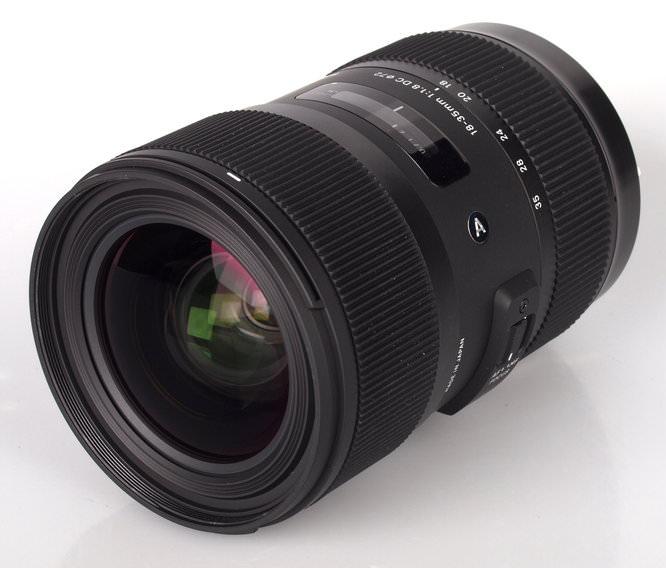
This much anticipated standard zoom lens for APS-C format cameras sports a fast f/1.8 maximum aperture throughout the zoom range and silent internal focusing with full time manual override. We have a final pre-production sample to test here and it will be available to fit Canon, Nikon and Sigma cameras, with a recommended retail price of £799.
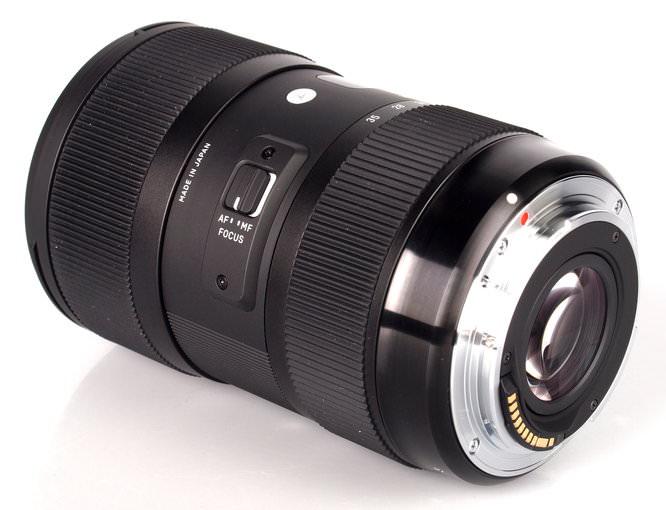
Sigma 18-35mm f/1.8 DC HSM A Handling and features
Even though this lens sports a fast f/1.8 maximum aperture throughout the zoom range it still weighs only 810g, which isn't as much as you might think. Build quality is very solid with high quality plastics used for much of the lens barrel. This lens feels right at home on the Canon EOS 600D used for testing and would balance even better on cameras with a slightly larger finger grip. The lens is finished with a metallic glossy finish in parts and both zoom and focusing rings are very smooth to operate, which reinforces the quality feel of the lens.
A silent HSM focusing motor powers the focusing mechanism, which is very quick to confirm focus and accurate, even on this pre-production sample. If your sample of this lens does exhibit focusing errors, this lens supports Sigma's new USB Dock accessory, which allows focus adjustments and firmware updates to be applied to the lens, quickly and easily. Focusing and zooming are performed internally, so the 67mm filter thread does not rotate, making this lens ideal for use with polarising and graduated filters.
Full time manual focus can be applied by simply adjusting the focus ring at any time. Manual focusing is a pleasure as the focus ring is quite heavily damped, and very smooth to operate. Closest focusing is 30cm from the sensor plane, which is great for shooting in claustrophobic environments, although the maximum achievable magnification of 1:5.2 may make this lens less suited to frame filling close-ups of smaller objects.
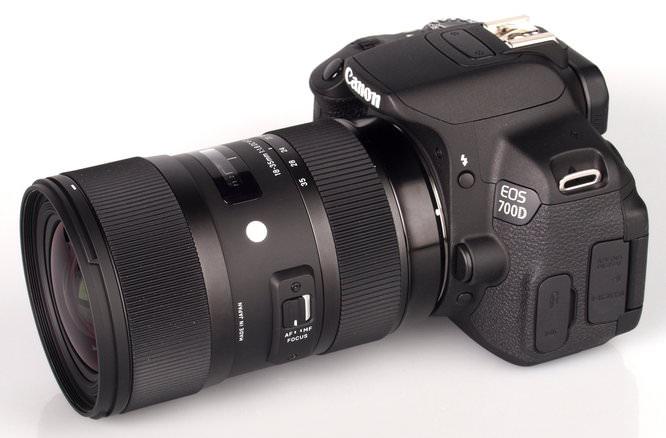
Sigma 18-35mm f/1.8 DC HSM A Performance
At 18mm and maximum aperture, sharpness in the centre of the frame is already outstanding with clarity towards the edges of the frame being just a shade short of excellent, which is impressive for a lens with an f/1.8 maximum aperture. Stopping down a little improves sharpness further, with peak performance being achieved between f/2 and f/2.8 for this focal length.
Zooming to 24mm results in a slight reduction in sharpness, although this lens is still very sharp at this focal length. At maximum aperture sharpness is still outstanding in the centre of the frame and the clarity towards the edges has fallen to very good levels. Stopping down to f/4 results in peak performance across the frame for this focal length, with outstanding sharpness being achieved from edge to edge.
Finally, at 35mm there is a slight further reduction in overall sharpness, although clarity is still very good across the frame at maximum aperture. Peak sharpness across the frame is achieved between f/4 and f/5.6 for this focal length.
|
|
|
|
|
How to read our chartsThe blue column represents readings from the centre of the picture frame at the various apertures and the green is from the edges. Averaging them out gives the red weighted column. The scale on the left side is an indication of actual image resolution. The taller the column, the better the lens performance. Simple. |
Chromatic aberrations are remarkably well controlled for a zoom lens with such a bright maximum aperture. The strongest fringing can be found towards the edges of the frame at maximum aperture at 24mm, although the level of CA is still low enough to cause very few issues here.
|
|
|
|
Chromatic aberration @ 35mm |
How to read our chartsChromatic aberration is the lens' inability to focus on the sensor or film all colours of visible light at the same point. Severe chromatic aberration gives a noticeable fringing or a halo effect around sharp edges within the picture. It can be cured in software.Apochromatic lenses have special lens elements aspheric, extra-low dispersion etc. to minimize the problem, hence they usually cost more. For this review, the lens was tested on Canon EOS 600D using Imatest |
Falloff of illumination towards the corners of the frame isn't as strong as you may expect from a lens with a fast f/1.8 aperture throughout the zoom range. At 18mm and f/1.8 the corners are only 1.25 stops darker than the image centre and at 35mm the corners are only 1.5 stops darker. Visually uniform illumination is achieved with the aperture stopped down to f/4 or beyond throughout the zoom range.
Distortion at both ends of the zoom is noticeable, but not overly strong with 2.71% barrel at 18mm and 1.06% pincushion at 35mm. The distortion pattern is uniform across the frame, so should be relatively straightforward to correct in image editing software afterwards.
A petal-shaped hood is supplied with this lens, which does a reasonable job of shielding the lens from extraneous light that may cause loss of contrast or flare. Even when shooting into the light, contrast remains good.
Sigma 18-35mm f/1.8 DC Sample Photos
Value for Money
With this lens being unique at the current time, with a fast f/1.8 maximum aperture throughout the zoom range, it is difficult to make direct comparisons. However, when the recommended retail price of around £799 is compared to the current prices of Nikon and Canon's f/2.8 lenses in the same range it stacks up quite well, especially as this lens is nearly £200 cheaper than Nikon's 17-55mm f/2.8 and only £70 dearer than Canon's 17-55mm f/2.8 IS lens. Adding up the cost of prime lenses covering this range adds up to considerably more on any system.
Sigma 18-35mm f/1.8 DC HSM A Verdict
In the past, Sigma have carved a niche for themselves creating new, exciting optics that don't already exist in manufacturer's own lens line-ups, such as their 15-30mm & 12-24mm lenses for full frame cameras, that were the first of their kind.
This lens opens new possibilities for owners of APS-C format cameras for low light shooting and creative use of depth of field with a fast f/1.8 maximum aperture, normally reserved for prime focal length lenses. The image quality delivered, especially at shorter focal lengths is of the level normally reserved for prime lenses also.
Sigma 18-35mm f/1.8 DC HSM A Lens Review: The Sigma 18-35mm f/1.8 DC HSM A lens has excellent sharpness and is reasonably priced.
Thanks to HarrisonCameras for providing the Canon EOS 600D used for testing.
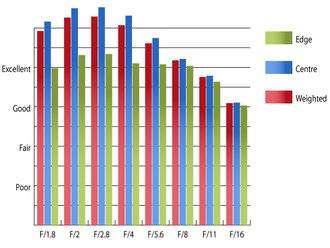
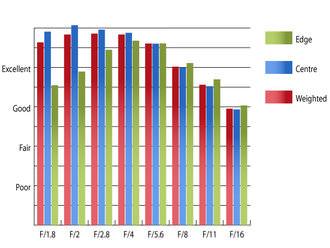 Resolution @ 24mm
Resolution @ 24mm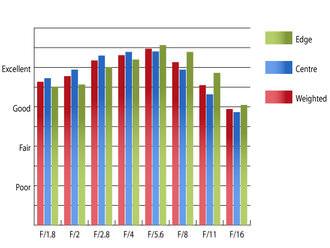 Resolution @ 35mm
Resolution @ 35mm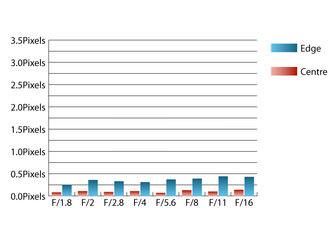 Chromatic aberration @ 18mm
Chromatic aberration @ 18mm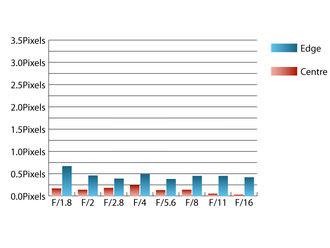 Chromatic aberration @ 24mm
Chromatic aberration @ 24mm







